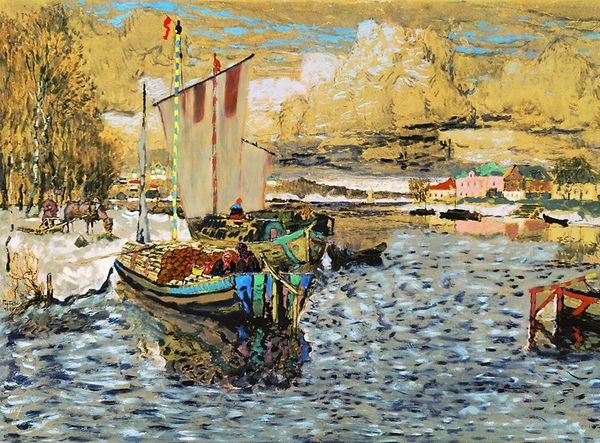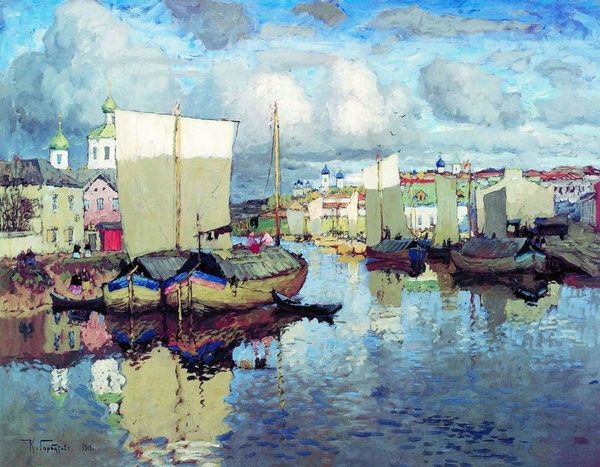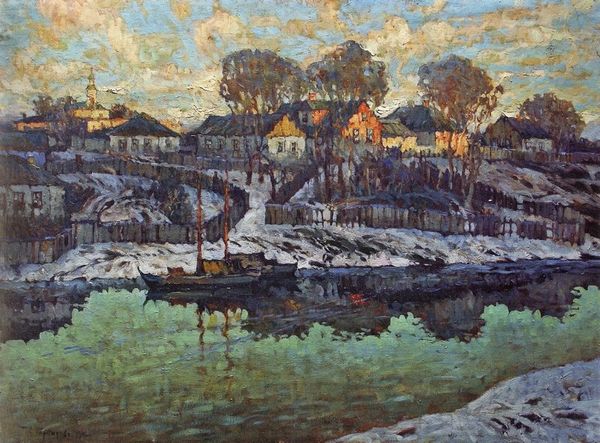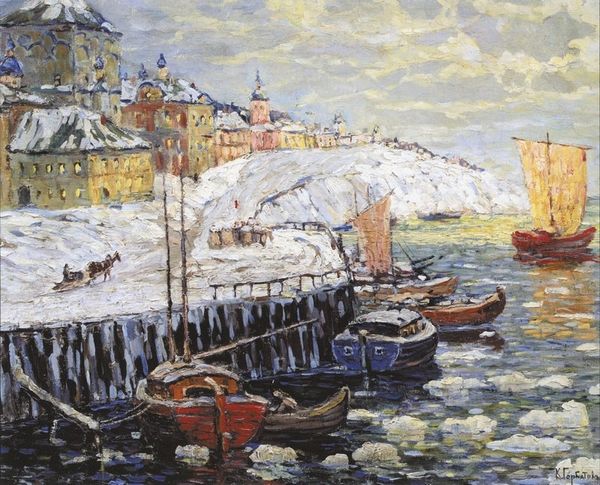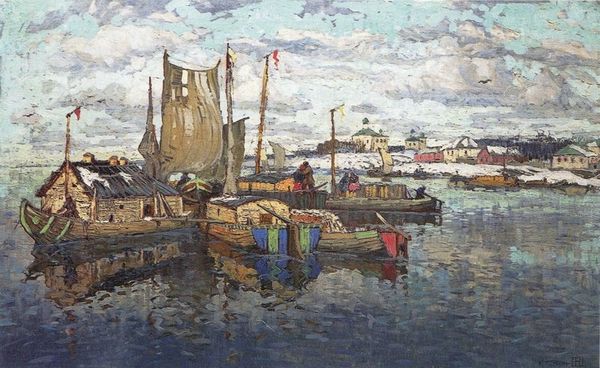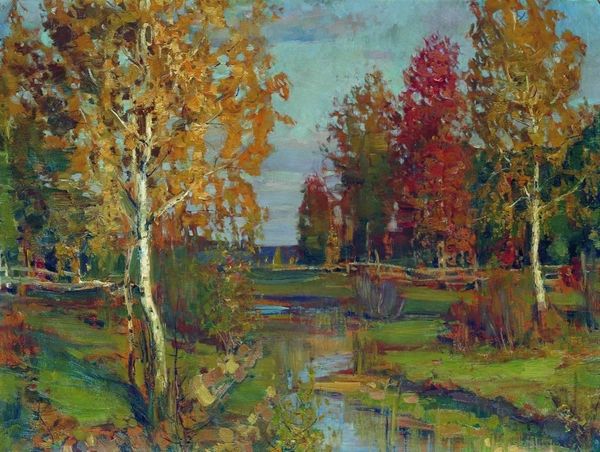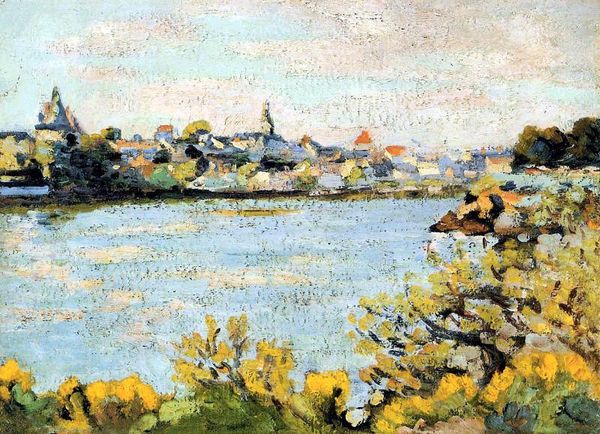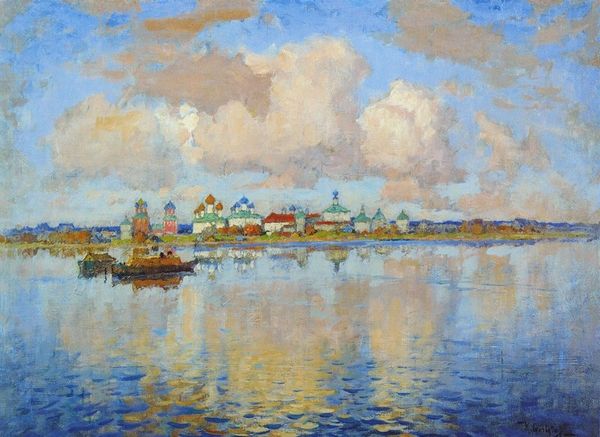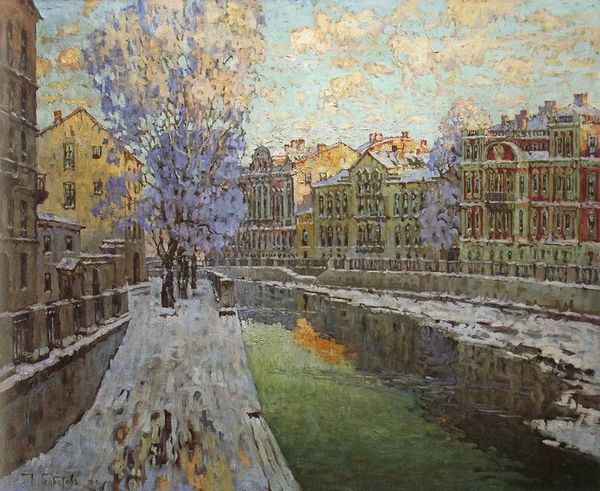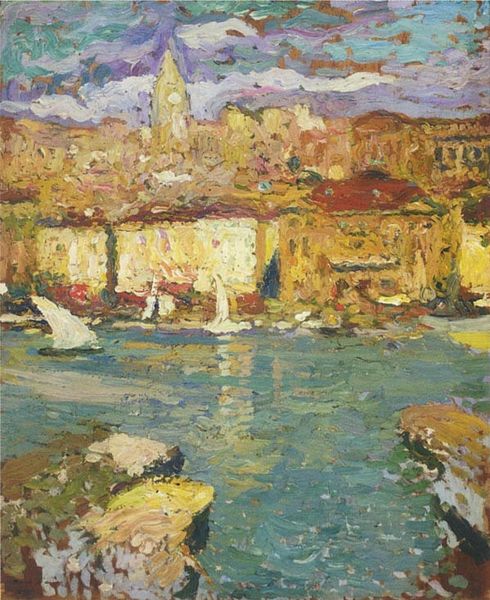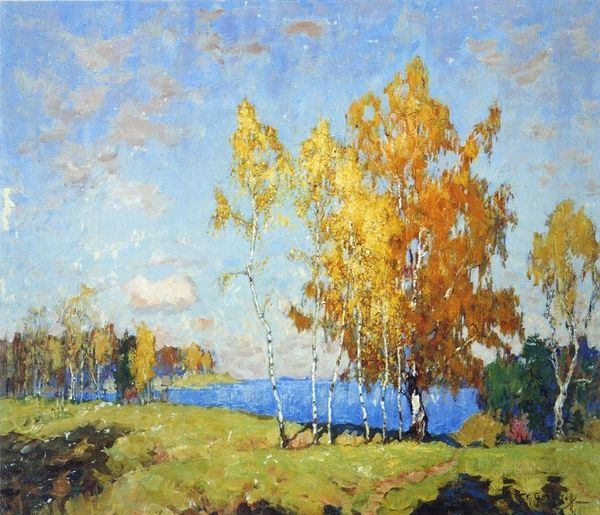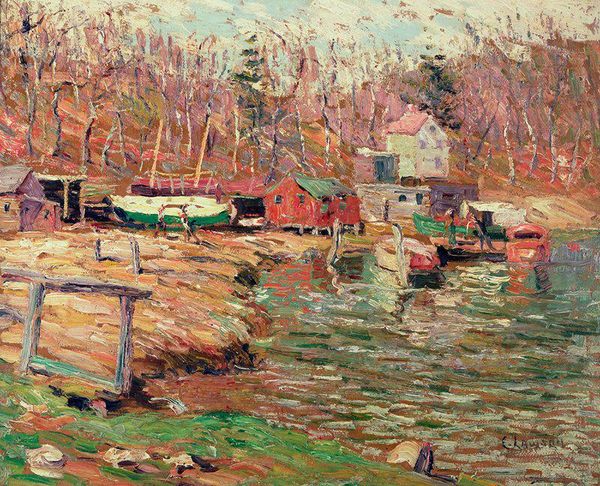
Copyright: Public domain
Curator: Let's turn our attention to Konstantin Gorbatov’s “Sunset in Pskov,” created in 1919 using oil paint. Editor: The painting’s initial impact is quite striking. The choppy brushstrokes seem to capture the ephemeral nature of a sunset, full of texture and movement, as if it is on fire. Curator: Precisely! Note how Gorbatov uses the materiality of the oil paint, layering it thickly to create a dynamic surface. Consider also how this technique, a clear adoption from the Impressionists, renders not just the *sight* but also the *feeling* of sunset light – that soft warmth – bouncing off the river's surface. It's an impressive rendering. Editor: I agree, it evokes a palpable sense of place. How fascinating to think about the physical process itself, how the painting reflects Gorbatov's physical engagement with his tools and medium to capture the specific light and conditions of Pskov. Did he stand there en plein air, one wonders? Curator: While difficult to confirm with certainty, it's plausible given the immediacy of the observation. See how he uses broken color and visible brushstrokes to deconstruct and reconstruct the scene. The reflections on the water are rendered with nearly abstract dashes of paint, disrupting our conventional understanding of representation. He builds up the architecture on the riverbank to show solidity, though. Editor: Speaking of representation, I notice the architecture itself; ordinary, utilitarian buildings made monumental through their arrangement and the sunset’s transformative light. Pskov itself was a city caught between tradition and revolution at this time. It's powerful how this scene might celebrate not grandeur but instead the labor embedded in the everyday, and those ordinary buildings’ resilience, using oil paint to imbue common things with beauty. Curator: It certainly offers a perspective on the period's complex cultural tensions. A fascinating interplay of light, place, and materiality indeed. Editor: It all comes together so powerfully; an evocative landscape constructed out of pigment, labor, and historical moment.
Comments
No comments
Be the first to comment and join the conversation on the ultimate creative platform.
